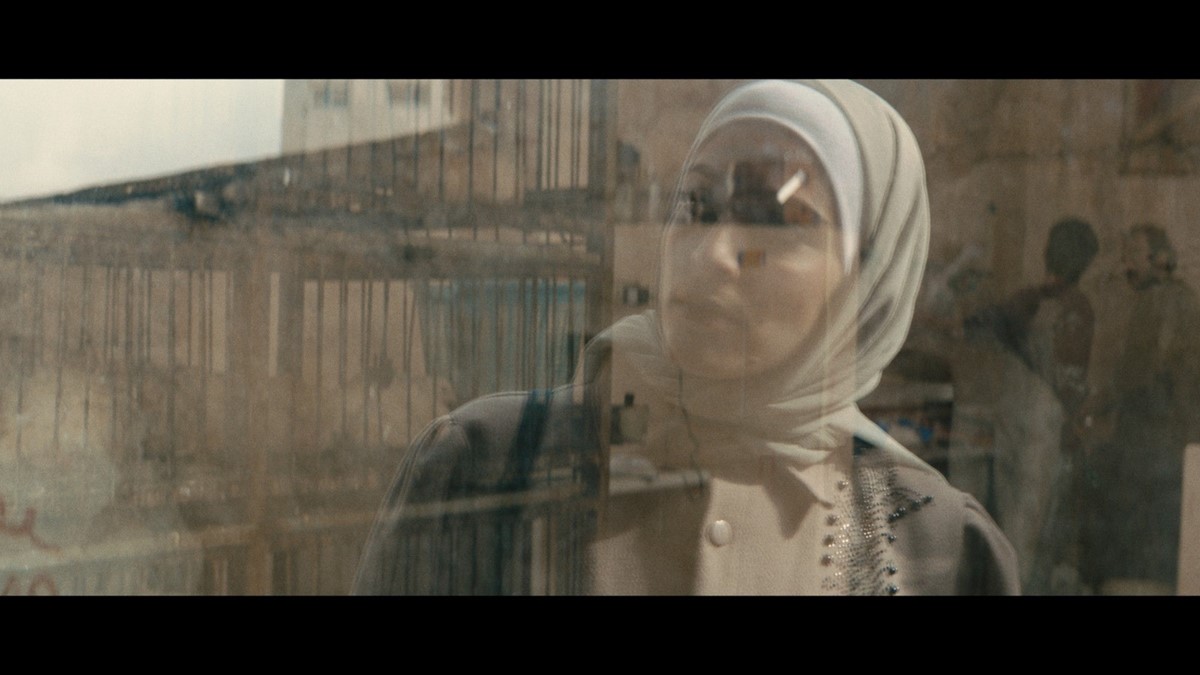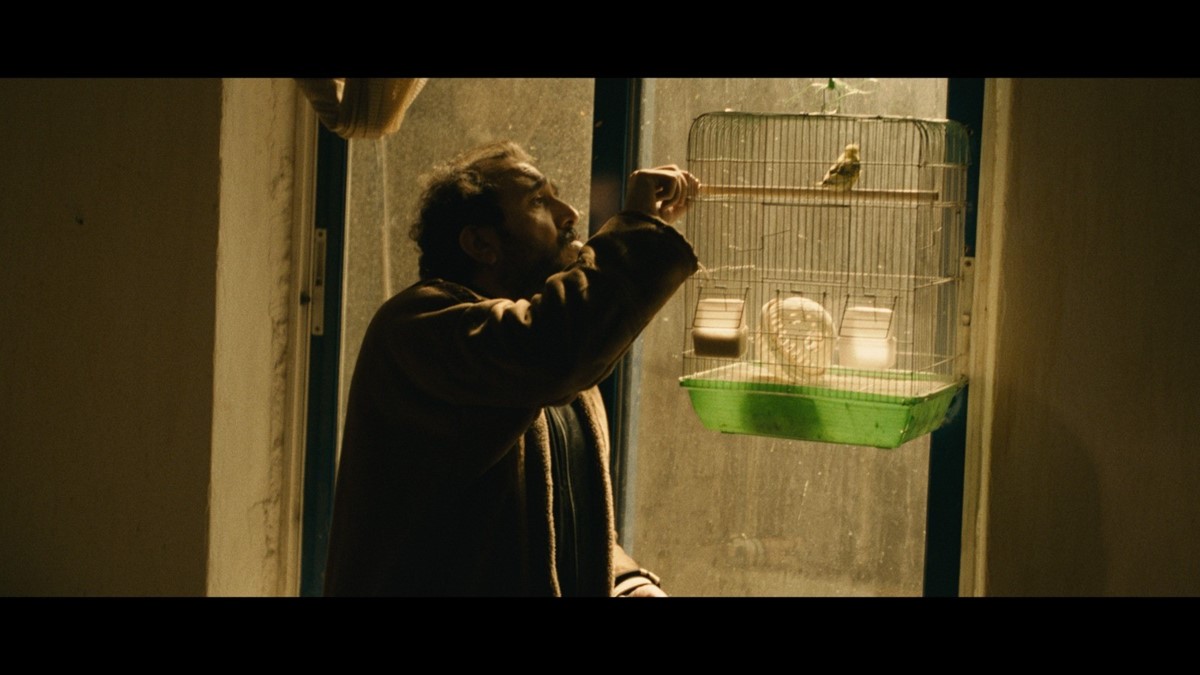By Israa Radaydeh
A female team from Irbid crafts a film that reclaims the female gaze in Jordanian cinema.
The Jordanian feature Simsim (2025), directed by Sundus Samirat, stands as a quiet revolution within the country’s social realist cinema, a film that gazes inward, into the confined rooms of marriage and the unspoken torment of women who dare to want more. Shot entirely in Irbid, far from the capital’s cinematic orbit, and made by an all-female crew of emerging voices, Simsim feels less like a debut and more like a manifesto.
اضافة اعلان



Between Cages and Skies
At its narrative core lies Ibtisam, known as Simsim, a woman in her late twenties bound to a marriage imposed by filial duty rather than love. Her husband, Qasem, a poultry breeder, spends his days tending to birds locked in cages , a potent metaphor for the life he’s built around his wife. After her father’s death, Simsim seeks to untangle herself from this domestic captivity, but her struggle collides with a patriarchal legal system designed to keep her tethered.
The film unfolds like a slow suffocation. Through Samirat’s restrained mise-en-scène and naturalistic pacing, the suffocating stillness of domestic life becomes palpable. Windows frame Simsim as if she were inside an aquarium; we watch her float, trapped, gasping for air. The recurring motif of the rooftop water tank , its stagnant surface reflecting her face — transforms into a visual metaphor for paralysis and self-recognition. Each time she peers into that motionless water, she confronts the weight of her own submersion.
Freedom as a Rehearsal for Madness
Simsim dares to examine a taboo seldom depicted in Jordanian cinema: a woman’s right to initiate divorce. Within the film’s moral geography, that act is a transgression punished not only by law but by the gaze of the community. Samirat renders this social suffocation without sensationalism. Her camera observes ,it does not accuse , allowing silence and repetition to bear emotional weight.
In a moment of dark irony, Simsim decides to find her husband a new wife, convinced that his desire for another might finally set her free. The absurdity of this act, tinged with black comedy, transforms the film from tragedy into farce , not to mock the character, but to expose the absurd logic of a society that allows a man to marry again yet condemns a woman for seeking release.
Here, Samirat’s direction channels the tonal duality of filmmakers like Asghar Farhadi and Kaouther Ben Hania: realism tinged with quiet satire, a world where laughter becomes an act of survival.
The Grammar of Symbolism
The film’s visual language is steeped in metaphor. Birds dominate its imagery — creatures that can fly but choose, or are forced, to stay grounded. Qasem’s cages stand as blunt metaphors, but Samirat gives them emotional resonance. Their clattering, their fluttering wings, their anxious stillness echo through the house like suppressed screams.
In contrast, the photography studio where Simsim works becomes a small pocket of liberation. There, an independent woman named Sabah owns a parrot that roams freely across the set — a cinematic inversion of Qasem’s cages. Within this juxtaposition lies the film’s dialectic: captivity versus autonomy, submission versus flight.
Even the protagonist’s chosen name, Simsim, holds symbolic weight. Derived from Iftah Ya Simsim (“Open Sesame”), it evokes childhood wonder and the unlocking of hidden doors. The film, then, becomes a story of opening , not just of doors, but of consciousness.
Performances Anchored in Truth
Saja Kilani delivers a quietly devastating performance as Simsim. Her expressiveness lies in stillness ,a tremor of the lip, a held breath, a gaze that refuses surrender. Kilani embodies the paradox of a woman both subdued and defiant, her gestures echoing the rhythm of daily endurance. It’s an astonishing debut, and it earned her the Best Actress (Debut) award at the Amman International Film Festival 2025.
Majd Eid’s portrayal of Qasem veers toward tragicomic absurdity. He is no tyrant — merely a man so domesticated by custom that he mistakes obedience for virtue. His oblivious kindness renders him both sympathetic and culpable, an embodiment of structural misogyny’s banality. The humor that arises from his interactions with Simsim,particularly as she bizarrely attempts to “marry him off” creates tonal elasticity, allowing the film to oscillate between laughter and lament.
Supporting characters deepen the film’s realism. The mother embodies the echo of generations past her fear of “shame” is the true antagonist of the film. Dina, the coworker resigned to marry a man like her father, functions as Simsim’s mirror image: the woman who stays. Sabah, confident and unburdened, stands as the film’s vision of what freedom might look like — embodied, imperfect, but possible.
Cinema Beyond the Capital
More than a story, Simsim represents a geographical and creative rupture. Born from a Royal Film Commission initiative in Irbid, it emerged from workshops where young women developed stories rooted in their lived environment. Written by Tamara Oweis, Razzan Al-Zoubi, Tayma Al-Twaisi, and Zahraa Bani Yaseen, the screenplay captures the textures of local speech, the cadence of Irbid’s streets, and the quiet dignity of its women.
By refusing to relocate the production to Amman, Samirat and her team made a statement: that the peripheries hold their own cinematic truths. The result is a film that feels of its place,its dust, its dialect, its sky.
A Film That Breathes Humanity
Simsim is not a flawless film. Some of its dialogue wavers; certain scenes linger longer than they should. But its imperfections are part of its pulse — the tremor of new filmmakers finding their voice. What it achieves, above all, is sincerity: an emotional authenticity often missing from polished cinema.
When the lights dimmed at its Amman premiere, the applause carried more than appreciation; it carried recognition. Viewers saw themselves, their mothers, sisters, and neighbors, in Simsim’s quiet rebellion.
In the end, Simsim is not only about a woman seeking divorce. It’s about a woman seeking air. It’s about the moment the caged bird looks up, measures the distance to the sky, and , wings trembling , dares to fly.



